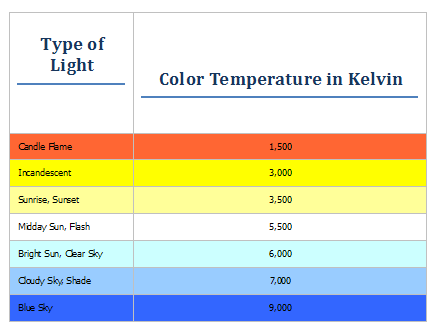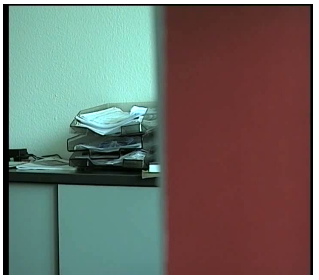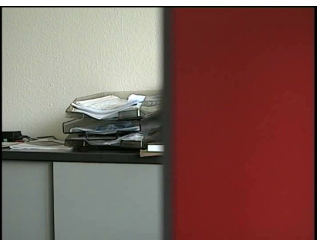
Color
Temperature
Most light sources are not 100% pure white but have a certain
"color temperature", expressed in Kelvin. For instance, the
midday sunlight will be much closer to white than the more yellow
early morning or late afternoon sunlight. This diagram gives rough
averages of some typical light sources.

Most cameras feature automatic white balance circuits whereby the
camera looks at the overall color of the image and calculates the
best-fit white balance. However these systems are often fooled
especially if the scene is dominated by one color, say red, or if there
is little natural white surfaces present in the scene as show in the
example below.
A normal camera without “Area White Balance” with a strong red present
in the picture will produce a background that looks blue on the white
wall shown in this picture.

JVCs
“Area White Balance” Feature
The
“Area White Balance” feature has been developed by JVC to ignore areas
with strong reflections of non-white colors and re-direct the auto
white balance circuits to focus on the areas that are white in the
picture. The JVC “Area White balance” function can be easily applied to
a designated area with more white area and avoid strong color casts in
the picture.

This
feature is yet another innovation designed by the experts at JVC to
provide users and integrators with tools to allow them to achieve
excellent results easily.
To see more of these innovative features please visit us at http://pro.jvc.com




